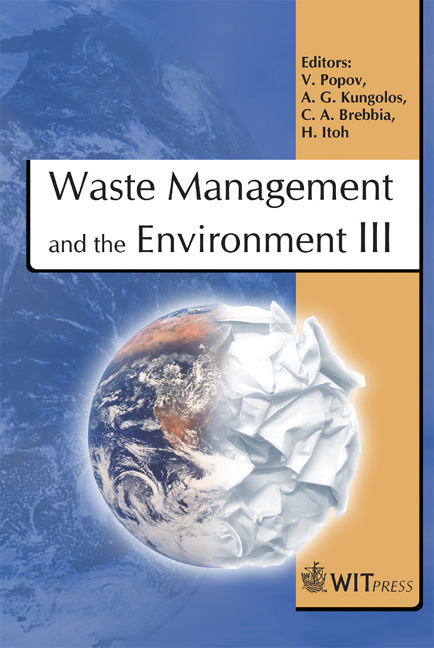Physical-chemical Characterization Of A Galvanic Sludge And Its Inertization By Vitrification Using Container Glass
Price
Free (open access)
Transaction
Volume
92
Pages
8
Published
2006
Size
909 kb
Paper DOI
10.2495/WM060031
Copyright
WIT Press
Author(s)
F. Andreola, L. Barbieri, M. Cannio, I. Lancellotti, C. Siligardi & E. Soragni
Abstract
Several industrial processes produce large amounts of heavy metals-rich wastes, which could be considered as \“trash-can raw materials”. The incorporation in ceramic systems can be regarded as a key process to permanently incorporate hazardous heavy metals in stable matrixes. In particular the aim of this work is to prepare and evaluate environmental risk assessment of coloured glass and glass-ceramic with the addition of chromium(III) galvanic sludge having a high content of Cr2O3 (15.91 wt%). Trivalent chromium compounds generally have low toxicity while hexavalent chromium is recognized by the International Agency for Research on Cancer and by the US Toxicology Program as a pulmonary carcinogen. The sludge has been characterized by ICP –AES chemical analysis, powder XRD diffraction, DTA, SEM, leaching test after different thermal treatments ranging from 400°C to 1200°C. Batch compositions were prepared by mixing this sludge with glass containers. The glass container composition is rich in SiO2 (69.89 wt%), Na2O (12.32 wt%) and CaO (11.03 wt%), while the sludge has a high amount of CaO (42.90 wt%) and Cr2O3 (15.91 wt%). The vitrification was carried out at 1450°C in an electrical melting furnace for 2 h followed by quenching in water or on graphite mould. Chromium incorporation mechanisms, vitrification processability, effect of initial Cr oxidation state, and product performance were investigated. In particular toxic characterization by leaching procedure and chemical durability studies of the glasses and glass-ceramics were used to evaluate the leaching of heavy metals (in particular of Cr). The results indicate that all the glasses obtained were inert and the heavy metals were immobilized. Keywords: chromium electroplating sludge, thermal behaviour; vitrification, chemical glass durability.
Keywords
chromium electroplating sludge, thermal behaviour; vitrification, chemical glass durability.





